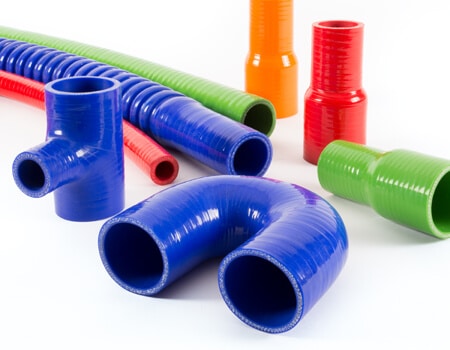Silicone hoses are a versatile, durable solution to many industrial and every-day problems. As a suggested alternative to normal rubber hosing, many are unsure of the applications...
What is the Difference Between Silicone Hoses and Rubber Hoses?
Introduction
Silicone hoses vs rubber hoses are both commonly used in industrial applications, but they are not interchangeable. The right choice depends on factors like temperature resistance, chemical stability, and flexibility. In this article, we will highlight the main differences between silicone hoses and rubber hoses, helping you select the ideal material for your specific application
1. Temperature Resistance
One of the biggest differences lies in the temperature range:
-
Silicone hoses can withstand temperatures from -60°C to +220°C, making them ideal for applications with high heat loads.
-
Rubber hoses (such as EPDM or NBR) are typically limited to -30°C to +100°C, depending on the type.
Conclusion: Choose silicone when working with extreme temperatures, such as in air handling, industrial machinery, or automotive cooling systems.
2. Flexibility and Aging
Silicone remains flexible for extended periods and is highly resistant to ozone, UV, and aging.
Rubber hardens more quickly over time, especially when exposed to sunlight or fluctuating temperatures.
Thus, silicone hoses are more durable in the long run and retain their flexibility better than traditional rubber hoses.
3. Chemical Resistance
Silicone and rubber each have their strengths and weaknesses in chemical resistance:
-
Rubber (such as NBR or Viton) performs better when exposed to oils, greases, and fuels.
-
Silicone is resistant to water, alcohols, and certain acids but is not suitable for use with oils or fuels.
Note: Our silicone hoses are not designed for use in contact with food or beverages.
4. Applications
Where rubber and silicone are applied depends heavily on the conditions:
| Application | Best Choice |
|---|---|
| High Temperatures | Silicone |
| Oil or Fuel Systems | Rubber (NBR/Viton) |
| HVAC and Air Handling | Silicone |
| Industrial Vibration Damping | Silicone or EPDM |
| Food or Pharmaceutical Use | Not suitable (both types require specific certifications) |
5. Price and Availability
Silicone is generally more expensive to purchase than rubber but also lasts longer in demanding conditions. Therefore, it can be a cost-saving choice in the long term.
Rubber United Helps You Make the Right Choice
We offer a wide range of silicone hoses and rubber hoses tailored to various industrial applications. Whether you need a solution for a cooling circuit, an HVAC system, or a machinery application, we are here to assist you.

